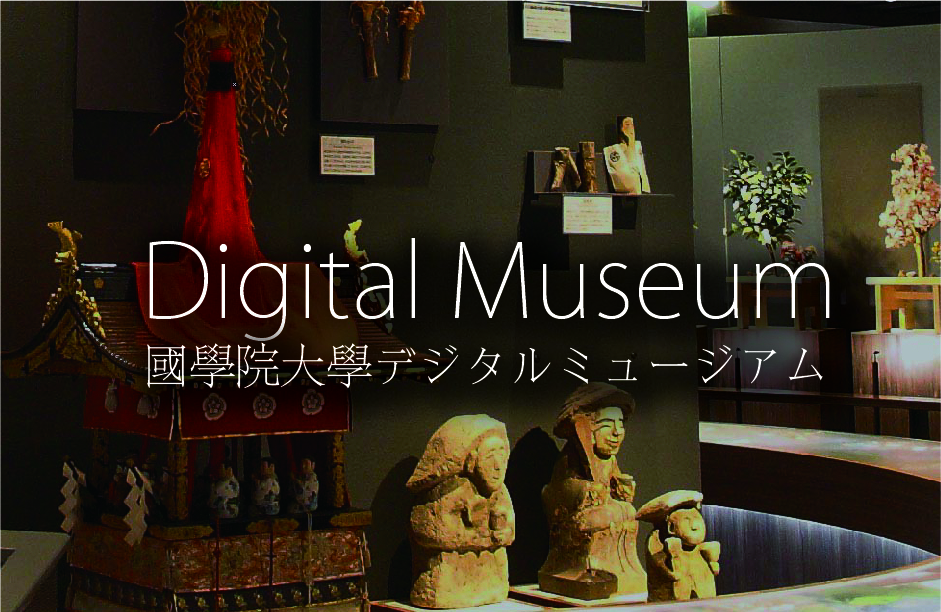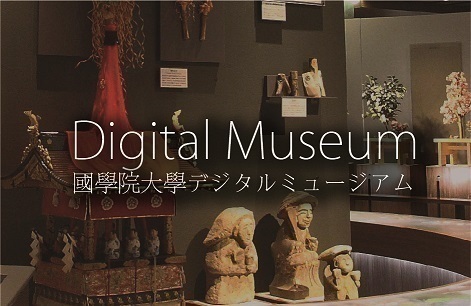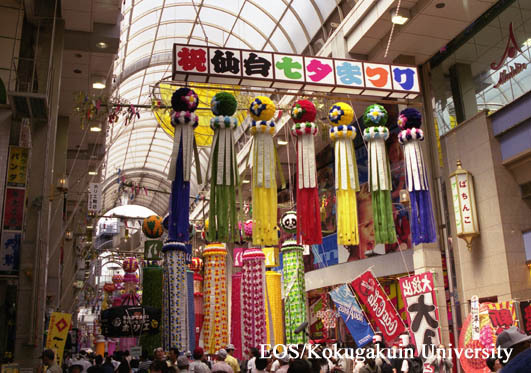- トップ
- Encyclopedia of Shinto
- Tanabata
Encyclopedia of Shinto
| Main Menu: | |
| Links: |
詳細表示 (Complete Article)
| カテゴリー1: | 5. Rites and Festivals |
|---|---|
| カテゴリー2: | Rituals in Daily Life |
| Title | Tanabata |
| Text | Held on the seventh day of the seventh month (i.e., July 7). One of the "five seasonal feasts" (gosekku) recognized and established by the Tokugawa bakufu. Also widely known as hoshi-matsuri (The Star Festival). This celebration is first mentioned in the 7th century Yōrō Code as one of the year's events, but it is a Chinese folk tradition in origin. According to an ancient Chinese story, two lovers—the Herdsman (Altair in the constellation Aquila) and the Weaver woman (Vega in the constellation Lyra)—traversed the sky separately and could cross the Milky Way and be together but once a year provided the sky was clear. This day was called Qi Xi, or "seventh night" (read tanabata in Japanese). A similar myth existed in Japan about the saintly maiden weaver, Tanabatatsume (lit. 'girl of the shelved loom'), who awaits her annual one-night visit from a kami at her hut by the river (that is, the Milky Way), and this fused with the Chinese tale of the Weaver woman. Also related to this celebration is a festival called kikōden (kikkōden), during which women pray for improvement in their weaving and calligraphy skills. At the court during the Heian period, they would skewer various foods from land and sea such as pears, peaches, and dried bream on seven gold and seven silver needles and threading them with five-colored string (blue, yellow, red, white, and black) to use as a tanabata offering. A banquet would also be held during which the emperor would observe the meeting of the stars, and performances of poetry, songs, and instrumental music would take place. Nowadays on tanabata, people commonly write poems or wishes on fancy strips of paper (tanzaku) and cut stars and other shapes out of brightly colored paper, and use these to decorate a stalk of bamboo. The decorated stalks are customarily released into rivers, streams, and the sea the next morning. Some believe this practice is the product of the spread of lessons in reading and writing during the Edo period. In some areas, horse-shaped puppets or other objects are substituted for bamboo stalks, and in others, the celebration involves a lighting of torches. There also exists a custom in still other areas known as nanoka-bon (7th day bon), in which tanabata celebrations are combined with those of the bon festival. Regardless of these variations, the celebrations that mark tanabata are another example of an event wherein people welcome the kami and their ancestors for the occasion and send them away after they have spent the night. Well-known, large-scale celebrations of tanabata include the Sendai Tanabata matsuri, which began in an attempt to help revive the economy in the postwar years; the Aomori Nebuta festival, in which papier-mâché lanterns (tōrō) of varying sizes and shapes are carried around; and Akita's Kantō festival, in which participants make their way through the streets carrying the eponymous kantō, a construct comprised of numerous paper lanterns balanced on tall bamboo poles. All three clearly have many touristic elements as well as the characteristics of the staged event. — Yumiyama Tatsuya |






